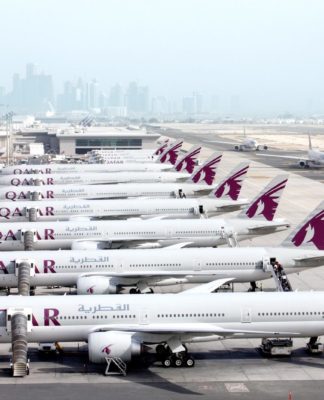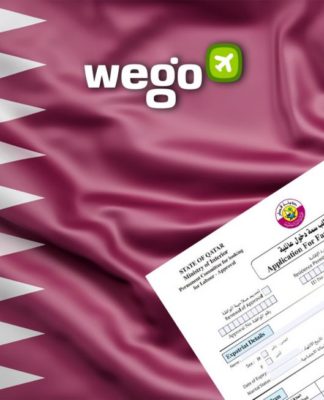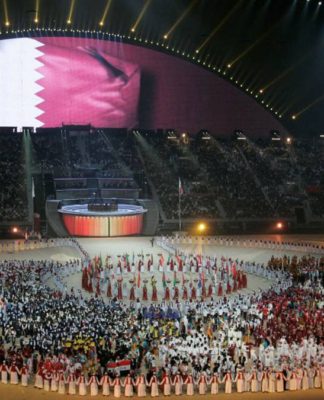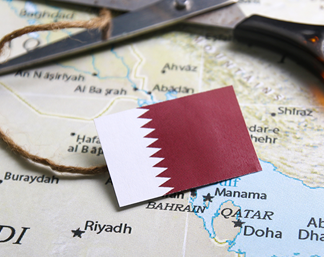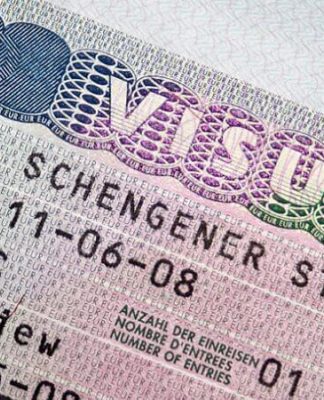
The Qatari economy is characterized by the strength of its institutions
The Qatar Chamber issued the monthly economic bulletin for January 2021, which included an analysis of the most prominent trends in the Qatari economy, as well as a report on the statistics related to Qatar’s foreign trade and private sector trade for November 2020.
The economic bulletin included a report on the performance of the Qatari economy during the past year, which witnessed the crisis of (Covid-19 /) and the decline in oil prices, as the Qatari economy was able to prove high efficiency and flexibility in dealing with crises, and succeeded in stabilizing the repercussions of the Corona crisis and the crisis of the great decline in oil prices. Minimal safe.
This is confirmed by all the international indicators issued by international financial and economic institutions as well as institutions concerned with global classifications of economies and the investment environment, which have unanimously agreed that the Qatari economy has obtained the highest credit ratings in the world. The International Monetary Fund has expected Qatar’s GDP to grow by about 2.7 percent during the year 2021. Supported by the increase in gas production, the recovery of domestic demand and the ability of the economy to quickly recover from the repercussions of the Corona pandemic, praising in this the rapid response of the Qatari authorities to take the immediate and necessary policies to confront the virus, which reduced the severity of the economic and social impacts, similar to what happened in most economies at the regional and global levels.
The economic bulletin also included a report on Britain’s exit from the European Union, and another report on the acceleration of economic cooperation between Qatar and the United Kingdom in recent years.
The bulletin included the monthly report on the foreign trade of the State of Qatar, which dealt with an analysis of the country’s foreign trade data for the month of November 2020 and the private sector trade through certificates of origin issued by the Chamber to Qatari companies to export their goods abroad.
The report indicated that according to the data of the Planning and Statistics Authority in the State of Qatar, the total volume of foreign merchandise trade for the month of November amounted to about (24.1) billion riyals, an increase of 2.1 percent compared to its volume during the month of October, when its value was (23.6) billion riyals. This increase came as a result of the increase in the value of exports, as the total value of (domestic origin and re-export) reached about (16.6) billion riyals during the month of November, an increase of 8.5 percent over its value in the month of October, when it reached about (15.3) billion riyals, as for imports. During the month of November, its total value amounted to about (7.5) billion riyals, with a decrease in its total value by (9.6 percent) compared to the month of October, when its value was then about (8.3) billion riyals. The trade balance achieved in November 2020 a surplus of about (9.
The Republic of China is the first trade partner at the level of the total volume of foreign trade of the State of Qatar with different countries of the world during the month of November 2020, where the value of the total trade exchange between them and the State of Qatar amounted to about 3.9 billion riyals, which represents 16.2 percent of the total Qatar’s foreign trade.
As for private sector exports, according to the private sector exports data during the month of November 2020 according to the certificates of origin issued by the Chamber, there was a slight decrease of (5.2%) from its value in last October, as the value of exports amounted to about (1176) million Riyals, compared to about (1240) million riyals in the month of October, affected by the decline in the value of exports according to the certificates of the preference model, which decreased to about (81) million riyals compared to about (276) million riyals in last October, despite the increase in other certificates such as certificates of the general form. That rose by 14.9 percent, the Arab countries model by 13.7 percent, and the Gulf Cooperation Council model by 6.1 percent.
The report indicated that when analyzing the data on the basis of the highest and lowest level of exports during the year, we find that the value of exports during the month of November remained high, at 105 percent, from the lowest level achieved in April, when the economy in general was suffering from strict measures to combat Covid-19. It remains (69 percent) below the level of export value, which was achieved in February, as the highest level of exports in 2020.
When analyzing private sector exports data according to the commodities that were exported during the month of November 2020 and comparing them with their values during the previous month (October), it becomes clear that, except for the petrochemical and chemical goods commodities, which recorded a decrease in the value of their exports by (90.7%) and (25.5%). Consecutively, and the iron commodity that did not register any exports during this month, the rest of the commodities in the list of the most important nine commodities exported by the private sector have achieved an increase in the value of their exports on a monthly basis and in varying proportions. The aluminum commodity, which tops the list with a relative weight of 29.6%, has achieved an increase in The value of exports from it on a monthly basis is 17.6%, then comes the commodity base oils and industrial oils with a relative weight of 21.1% and an increase in the value of exports by 11%, and in the third place in the list comes the commodity of industrial gases with a relative weight of 14%, which has achieved an increase of 36.6%. Fourth, the relative weight of chemical fertilizers is 11.Paraffin came in fifth place, with a relative weight of 7 percent, with a very large increase of 529.6 percent in the value of its exports, and the sixth commodity, lotrin, with a relative weight of 5.6 percent, and an increase in the value of its exports by 4.9 percent.
In a related context, India returned to the top of the list of countries that represent a destination for Qatari private sector exports after its retreat in the previous month to the second place. In November, it received about (259) million riyals, 22 percent of the total private sector exports. The Netherlands, whose market received a value of about (214) million riyals, with a share of 18.23 percent, then Bangladesh comes in third place, receiving exports of about (127) million riyals, a rate of 10.77 percent, then the Turkish Republic is in fourth place with an export value of about (89.2) One million riyals, with a rate of 7.59 percent of total exports, and in fifth place, the Sultanate of Oman, which received exports of about (88.9) million riyals, was ranked by 7.3 percent.
With an analytical view of the trends of Qatari private sector exports for the month of November 2020 according to the regions and economic blocs that received these exports, we note that the group of Asian countries topped the list by receiving a value of about (679) million riyals, which is equivalent to 57.72 percent of the total exports, then the group of European Union countries secondly. The value of exports amounted to about (283) million riyals, or 24.10%, followed by the group of Gulf Cooperation Council countries with a value of 9.43%, and the value of exports amounted to about (111) million riyals, then the group of Arab countries (excluding the Gulf Cooperation Council countries) that received exports From the Qatari sector, with a value of about (89) million riyals, or 7.57 percent, the group of African countries (except for the Arab countries) ranked fifth with a rate of 0.9 percent, and the value of exports amounted to about (11) million riyals, then sixth for the group of other European countries (other than the European Union countries) (By 0.14 percent and with an export value of about (1).6) One million riyals, and in the seventh place came the United States of America, which received about (0.957) million riyals of these exports, which is equivalent to 0.08 percent of the total exports. Finally, the other American countries came in eighth place with 0.07 percent and the value of exports amounted to about ( 0.776) million riyals, while the Oceania Group did not receive any exports from the Qatari private sector.


















